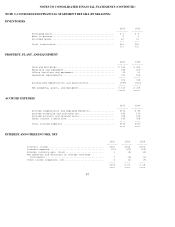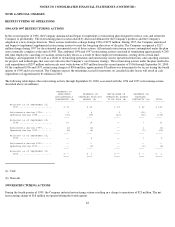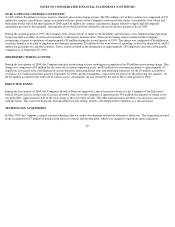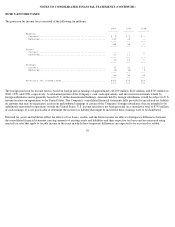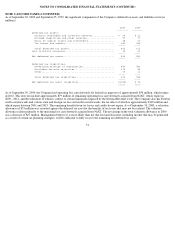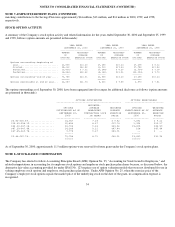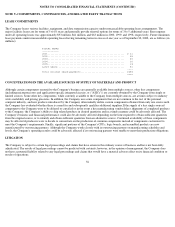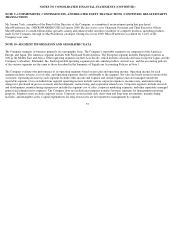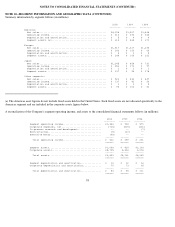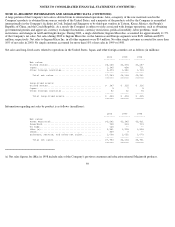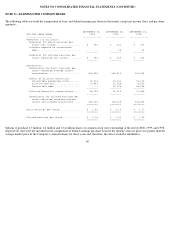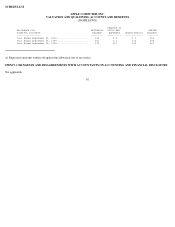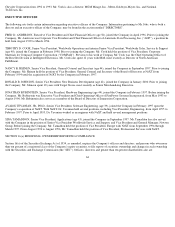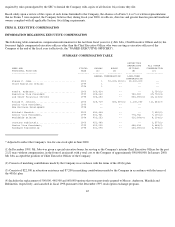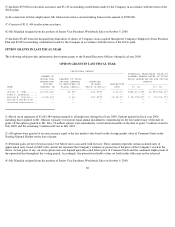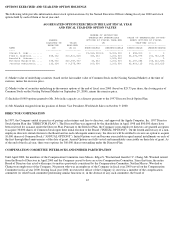Apple 2000 Annual Report Download - page 60
Download and view the complete annual report
Please find page 60 of the 2000 Apple annual report below. You can navigate through the pages in the report by either clicking on the pages listed below, or by using the keyword search tool below to find specific information within the annual report.NOTES TO CONSOLIDATED FINANCIAL STATEMENTS (CONTINUED)
NOTE 9--COMMITMENTS, CONTINGENCIES, AND RELATED PARTY TRANSACTIONS (CONTINUED) RELATED PARTY
TRANSACTIONS
Mr. Jerome York, a member of the Board of the Directors of the Company, is a member of an investment group that purchased
MicroWarehouse, Inc. (MICROWAREHOUSE) in January 2000. He also serves as its Chairman, President and Chief Executive Officer.
MicroWarehouse is a multi-billion dollar specialty catalog and online retailer and direct marketer of computer products, including products
made by the Company, through its MacWarehouse catalogue. During fiscal year 2000, MicroWarehouse accounted for 3.26% of the
Company's net sales.
NOTE 10--SEGMENT INFORMATION AND GEOGRAPHIC DATA
The Company manages its business primarily on a geographic basis. The Company's reportable segments are comprised of the Americas,
Europe, and Japan. The Americas segment includes both North and South America. The European segment includes European countries as
well as the Middle East and Africa. Other operating segments include Asia-
Pacific, which includes Australia and Asia except for Japan, and the
Company's subsidiary, Filemaker, Inc. Each reportable operating segment provides similar products and services, and the accounting policies
of the various segments are the same as those described in the Summary of Significant Accounting Policies in Note 1.
The Company evaluates the performance of its operating segments based on net sales and operating income. Operating income for each
segment includes revenue, cost of sales, and operating expenses directly attributable to the segment. Net sales are based on the location of the
customers. Operating income for each segment excludes other income and expense and certain expenses that are managed outside the
reportable segment. Costs excluded from segment operating income include various corporate expenses, income taxes, and nonrecurring
charges for purchased in-process research and development, restructuring, and acquisition related costs. Corporate expenses include research
and development, manufacturing expenses not included in segment cost of sales, corporate marketing expenses, and other separately managed
general and administrative expenses. The Company does not include intercompany transfers between segments for management reporting
purposes. Segment assets exclude corporate assets. Corporate assets include cash, short-term and long-term investments, manufacturing
facilities, and intangible assets. Capital expenditures for long-lived assets are not reported to management by segment.
57


